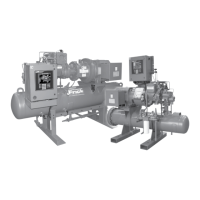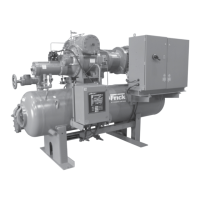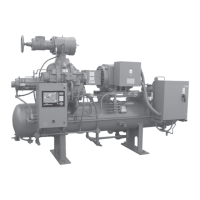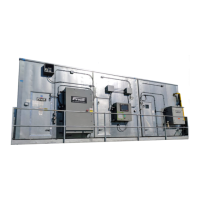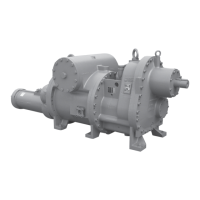Engineering manual - SAB 193-233-283 S A-frame (including ATEX)
008831 en 2020.10
125/168
Installation instructions
7.30 Pressure testing
After installation, the unit must be pressure tested and pumped down.
Pressure testing of refrigeration plant
Before charging refrigerant to the plant, it must be pressure tested and pumped down.
Pressure test the plant with one of the following:
• dry air; pressurised cylinders containing dry atmospheric air, but never oxygen cylinders
• air compressor for high pressure
• nitrogen
See also subsection 15.4 Evacuation and charging of refrigerant.
Danger!
The plant compressors must not be used to pressurise the plant.
Warning!
Water and other fluids must not be used for pressure testing.
Danger!
If using nitrogen, it is important to place a reducing valve with a pressure gauge between the ni-
trogen cylinder and the plant.
During pressure testing, it is important to make sure that pressure transducers and other control
equipment are not exposed to the test pressure. The compressor stop valves must also be closed
during pressure testing.
Plant safety valves must normally be blanked off during pressure testing as their opening pres-
sure is lower than the test pressure.
Danger!
During pressure testing, no persons are allowed in rooms with plant parts or in the vicinity of the
plant.
• The entire plant must be pressure tested according to local pressure testing rules.
• The test pressure must never exceed the pressure the unit was designed for.
• If required that the compressor is pressure tested with the unit, the test pressure must
not exceed 28 bar.
• As an initial tightness test, reduce pressure to 10 bar for a period of 24 hours. A tightly
sealed plant will maintain this pressure throughout that period.
• Please make sure that manometers, pressure controls, pressure transducers and other
control equipment are not exposed to the test pressure.
During leak testing it is permitted to enter the rooms and approach the plant.
• As a second tightness test, examine all welds, flange joints, etc. for leaks by applying
soapy water while maintaining the 10 bar pressure.
When pressure testing, make a pressure test report containing the following:
• date of pressure testing
• name of person performing the test
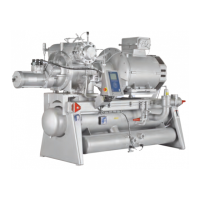
